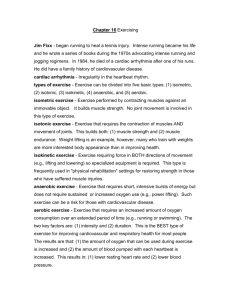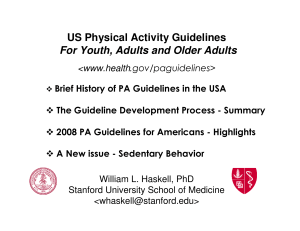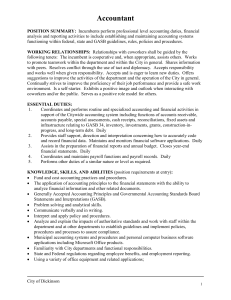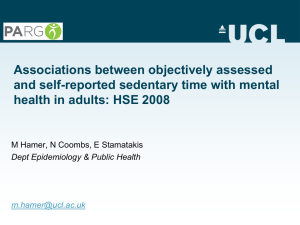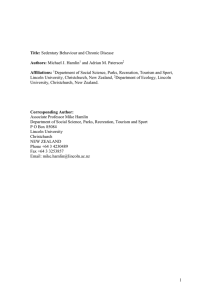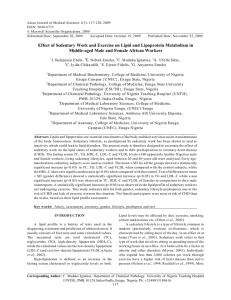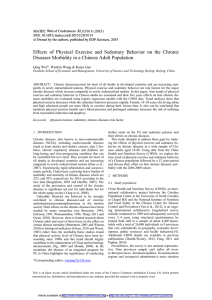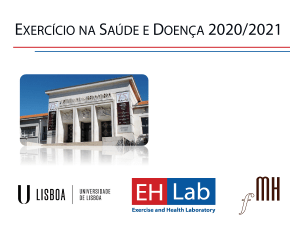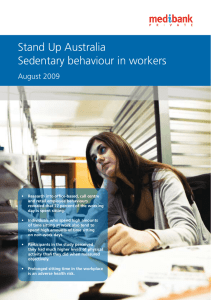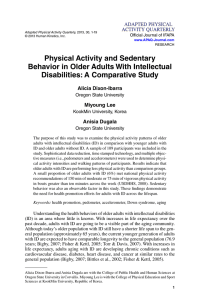Exercising for Your Heart
advertisement
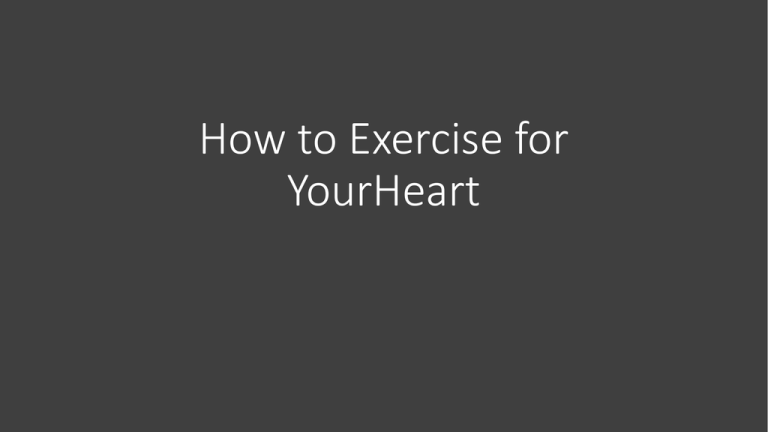
How to Exercise for YourHeart HEART RATE • Resting Heart Rate (____ ____ ______ ______) should be between ___ - _____ BPM. This can depend on your level of fitness, age, gender, heredity, lifestyle choices, and whether or not you have been sedentary (doing nothing). • Target Heart Rate (___ - ____% of maximum heart rate) is where you get cardiovascular benefits from a work out. • __________ heart rate is the absolute maximum workload that your heart can take. You do not want to push yourself to this limit. Heart Rate Calculations • Maximum Heart Rate: Subtract your age from 220 • Lower Limit Target Heart Rate: Multiply your maximum heart rate by 0.6 • Upper Limit Target Heart Rate: Multiply your maximum heart rate by 0.85 • Your target heart rate range is somewhere between your Lower Limit Target Heart Rate and your Upper Limit Target Heart Rate What’s beneficial • According to the American College of Sports Medicine, exercising at the _______ end of your target heart rate for a ______ time is more beneficial than exercising at the _______ end of your target heart rate for a _______ time. • 60-70 percent ______ ________ & _______ • 70-80 percent improves ______ ________ and strengthens your heart rate • Competitive athletes may train at ____ - _____ percent of the maximum heart rate Aerobic vs Anaerobic • _______ ________ - improves cardiovascular endurance. Involves working strenuously without pushing to the point of breathlessness. • _________ ________ – high in intensity, but short in duration. The amount of oxygen taken in by the body cannot meet the demands of the activity. Last 10 seconds to 2 minutes in duration. • ___-________ Activity – frequent rest between activities. The body takes in all the oxygen it needs and the heart and lungs don’t reatlly get much of a work out. (Bowling, Softball, Doubles Tennis Aerobic Activities that improve Cardiovascular Heatlh • Walking – • • • • • Walk slowly for 5 minutes then do some light stretches Maintain good _______ Use ____ __ ____ method Pump Arms _____ and _____ End walk the same way you started Continued… • Jogging & Running • The difference between jogging and running is ______. • You should be able to _____ on a ________ with someone when jogging or running. If you’re too __________ to talk, you’re pushing too hard. • Long, slow, distance running is best for enhancing _______ fitness • Swimming • Swim Laps using freestyle, butterfly, breaststroke or backstroke • • • • • Cycling Spinning Jumping Rope Aerobic Dancing Stair Climbing Risk of Sedentary Living • Sedentary Living is a ______ to your health • Increases causes of _____ • Doubles risk of _____ _______ illness, ________, and obesity • Increases risk of _____ cancer, high blood pressure, osteoporosis, __________, and anxiety. • The combination of physical ________ and being overweight is responsible for ________ deaths per year. • Sedentary people are ____ as likely to die of a heart attack than people who are physically active. Benefits of Physical Activity • Longer Life • Healthier Heart and Lungs • Protection Against Cancer • Less Risk of Disease • Brighter Mood • Better Mental Functioning • Better Bones • Lower Weight • More Active Old Age Ponder the Following 1. Are you getting enough aerobic activity everyday? Please explain your answer. 2. Calculate your maximum heart rate, lower limit target heart rate, and upper limit target heart rate using the formula given in the slide show. 3. What changes can you make to your physical activity routine to enhance your cardiovascular endurance? 4. Do you find yourself being sedentary more often than you are physically active? If so, what should you do to change? What are your risks if you continue to live a sedentary lifestyle? 5. What are some ways that you can get your family involved in heart healthy activities, that are fun and also get your heart rate into the Target Heart Rate zone?
